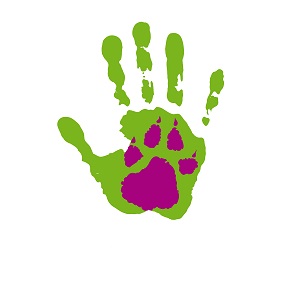Tips For Working With People Aggressive Or People Reactive Dogs
People tend to have cognitive thoughts and memories. “Why didn’t I buy the red car?” “I should rent the red brick house.”
Dogs have more reactive, or recall thoughts and memories. Sights, odors, textures and sounds can all contribute to reactive responses from dogs. In this article, I address anxiety, particularly separation anxiety in dogs, and how we humans create much of the reactionary issues.
Most anxiety in dogs is the product of our human rituals. For example, in the morning we: get up to an alarm; make coffee, tea or breakfast; sit at the computer to check news or social networks; shave; shower; put on make-up, etc. We then grab our jingling keys and leave the dog home alone.
Dogs can translate all of these activities into stress; they are very aware and learn that the aforementioned rituals lead to being alone, which is not a natural thing for a dog. They don’t have the ability to sit down with a book or watch a movie for entertainment. This often leads to hyperactivity and stress-filled energies.
I recommend to my clients that, if possible, when they do their morning rituals instead of leaving directly afterward, they take the dog on a brisk walk with lots of redirection (e.g., making the dog stop at corners; changing directions often; having the dog be alert and follow your lead by making them heel). In other words, physical activity combined with exercising their brains further tires a dog.
A client may also wish to do the morning rituals but then stay and play with the dog. Twenty minutes of fetch will go a long way toward exercising both body and mind. It will also create a very healthy bond between the client and her dog. This gives both a rewarding experience and positive actions instead of creating anxiety about leaving right after the rituals.
In addition, I suggest giving the dog something positive to associate with the client’s leaving, such as a Kong brand toy filled with peanut butter and biscuits, which is then frozen overnight. This will make the dog work for the treats for some time after the client has left. A Nylabone brand chew is another alternative as it, too, will give the dog an activity that lasts for a long time.
Crates can work well, too. A client can cover three sides and top to replicate a calm, quiet, darkened den for her dog. Placing one of the above mentioned toys in it will also help a lot. Have your clients turn it into their dog’s personal space—and not a jail cell. Dog owners should never use the crate for punishment or banishment. While the client is home, she should leave the door open and toss toys and treats into it to help create a positive association.
Finally, a client should make her departure less traumatic with a quick, bright, “I’ll be back,” which makes the exit more trivial, less anxiety inducing and as low key as possible. Her return should be more rewarding with a hearty, happy, “I’M BACK!” to teach the dog that leaving is no big deal; returning will happen and is a wonderful thing.
